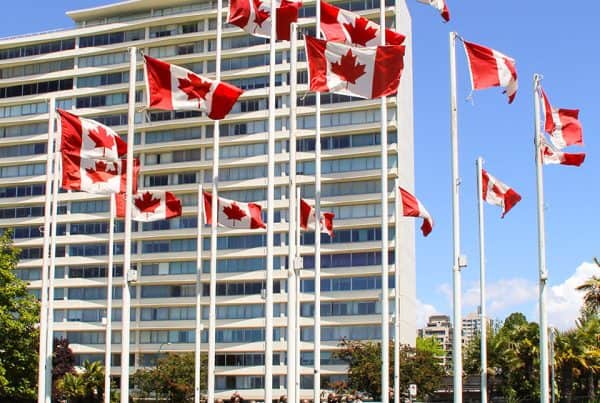Getting that rejection letter hits hard. Your asylum claim has been denied, and you’re probably wondering what comes next. The good news? This isn’t necessarily the end of your story in Canada. There are several legal options available; however, timing is crucial.
What Does Your Denial Actually Say?
The Immigration and Refugee Board’s Refugee Protection Division (RPD) doesn’t just say “no” – they explain why. Common reasons include questions about your credibility, not enough evidence of persecution, or a determination that you don’t meet Canada’s definition of a refugee. Read this blog post carefully because it tells you whether you can appeal.
Here’s what happens after denial: a removal order takes effect. Once you’ve used up all your legal options, you have to leave Canada. That’s why moving fast matters.
The Refugee Appeal Division – Your Best Shot
Most people can appeal to the Refugee Appeal Division (RAD), but you only have 15 days from getting your rejection to file. The RAD looks at what the RPD decided and can either agree with them, overturn the decision, or send it back for another look.
RAD appeals work on paper, not in person. You don’t usually get to appear before anyone – instead, you submit documents, legal arguments, and evidence. After filing your appeal notice, you have 30 days to put together your appellant’s record. This is basically everything you want the RAD to consider about why the original decision was wrong.
Most RAD decisions take a few months. But at least you know something’s happening.
What Can the RAD Do?
The RAD can make one of three decisions: stick with what the RPD said, make their own decision, or tell the RPD to look at your case again. Obviously, you’re hoping for option two or three.
Federal Court – When the RAD Says No
If the RAD upholds your denial, you can ask the Federal Court to review their decision. But this isn’t really an appeal – it’s more like asking a judge to check if the RAD followed the rules properly.
The Federal Court only gets involved if the RAD made legal mistakes, was unfair, or its decision just doesn’t make sense based on the law. They don’t re-examine all your evidence from scratch.
You have 15 days from the RAD decision to file with the Federal Court. Miss this deadline and you could be on a plane home. The Court can sometimes pause your removal while it reviews your case, which buys you time.
PRRA – Another Chance to Show Risk
The Pre-Removal Risk Assessment (PRRA) is for people who can’t appeal to the RAD or have already tried everything else. It looks at whether you’d face persecution, torture, or threats to your life if sent back to your home country.
PRRA focuses on new evidence or things that have changed since your original claim, or within a year before applying. It is not about the past, but about the present risks.
Typically, it takes 12 months after the last refusal to apply for PRRA. The rules are precise with regard to time and eligibility, though there are certain exceptions.
Humanitarian and Compassionate Applications
In some cases, you may be able to apply on humanitarian and compassionate grounds to remain in Canada, even when you do not qualify as a refugee. These applications consider factors such as whether you are established in Canada, your family ties, the best interests of any children involved, and the sort of strife that would come to you were you deported.
H&C applications are entirely up to the immigration officer’s discretion. You need strong evidence of exceptional circumstances to succeed.
How to Appeal an Asylum Denial Effectively
Fighting an asylum denial means picking apart the original decision to find where they went wrong. You need to spot legal errors, gather new evidence that supports your case, and deal with any credibility issues that hurt you the first time.
The refugee claim appeal process has no room for mistakes. Miss a deadline or forget to include required documents, and your appeal gets tossed without anyone even looking at whether you deserve protection.
Why You Need Legal Help After Asylum Denial
The situation with the Canadian refugee system is already complex, and the stakes are high. Refugee lawyers are well aware of how these appeals operate, what their deadlines are, and most importantly, how to get your case across.
An experienced immigration lawyer in refugee appeal can determine what happened to your first claim, what your best options are legally, and ensure that all is filed promptly and correctly. They are also able to inform you whether there is new evidence or altered circumstances which may favour other applications.
What Happens Next
The weeks after an asylum denial are crucial. You have multiple legal options, but each comes with its own rules, deadlines, and chances of success. From RAD appeals to Federal Court challenges to alternative applications, there are ways to fight back.
Success depends on understanding these options and acting quickly. The refugee appeal process gives you real opportunities to challenge unfair decisions, but only if you approach them with the right knowledge and preparation.
Conclusion
A denial of asylum sounds definitive, but is merely the initial stage in a more protracted judicial procedure. The system in Canada allows appealing against negative decisions in a variety of ways, but one has to be well-equipped and quite fast with it.
Ronen Kurzfeld has been working with precisely such situations for decades. ImmigrationWay specializes in refugee and immigration law, enabling individuals facing the greatest stakes to know their options. When you are in danger of being deported from Canada, it can all come down to having someone with a thorough understanding of the system to find or clear a way forward.





